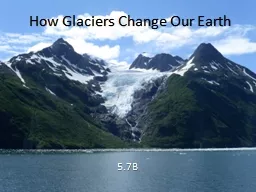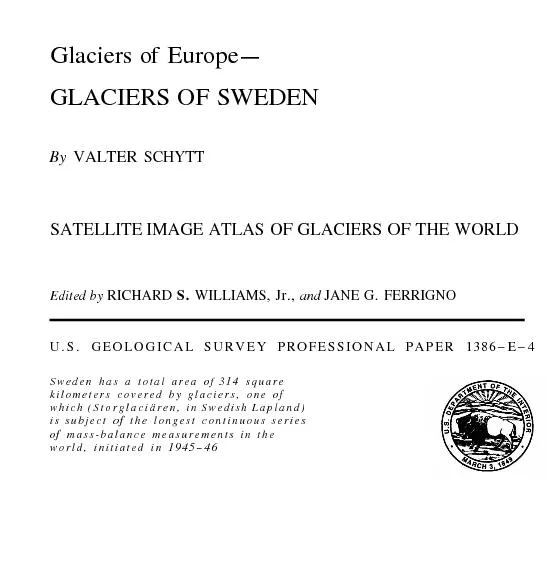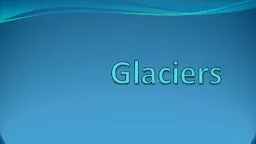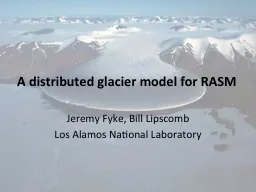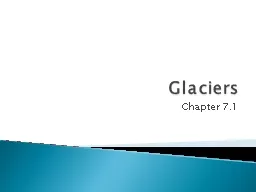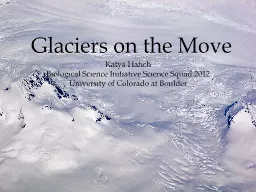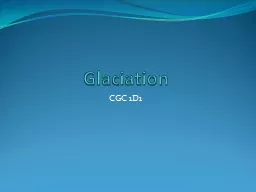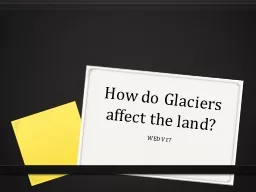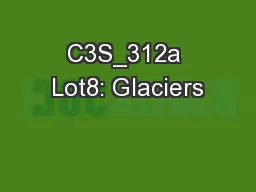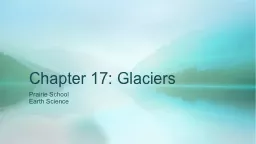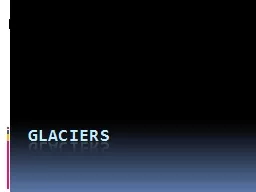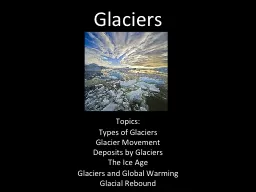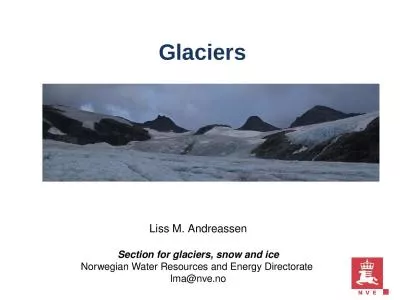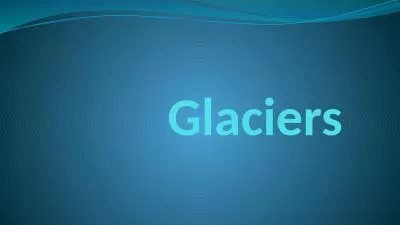PPT-How Glaciers Change Our Earth
Author : phoebe-click | Published Date : 2017-05-20
57B Thinking About Glaciers Glaciers cover about onetenth of the Earths surface Most of the fresh water found on the Earth is frozen in glaciers Glaciers move very
Presentation Embed Code
Download Presentation
Download Presentation The PPT/PDF document "How Glaciers Change Our Earth" is the property of its rightful owner. Permission is granted to download and print the materials on this website for personal, non-commercial use only, and to display it on your personal computer provided you do not modify the materials and that you retain all copyright notices contained in the materials. By downloading content from our website, you accept the terms of this agreement.
How Glaciers Change Our Earth: Transcript
Download Rules Of Document
"How Glaciers Change Our Earth"The content belongs to its owner. You may download and print it for personal use, without modification, and keep all copyright notices. By downloading, you agree to these terms.
Related Documents

